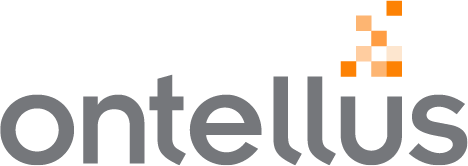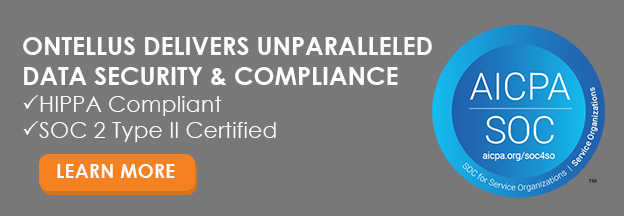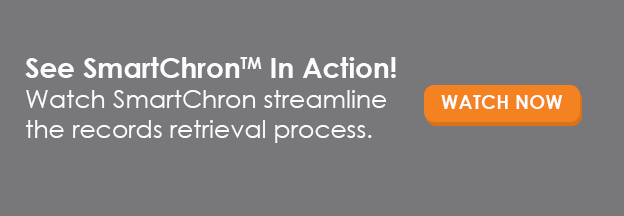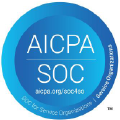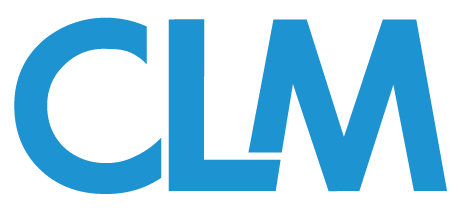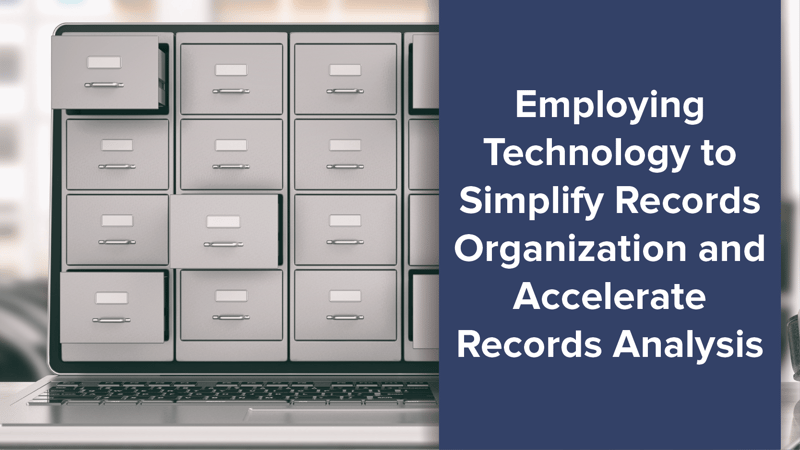
Anyone familiar with the claims investigation and litigation discovery process knows that obtaining medical, pharma, employment, and other key records requires time and resources. Not only are there multiple steps required to retrieve records, but to gain insight from them, the records need to be sorted, organized, and digitized, so that they can be electronically searched, displayed online, and used in machine processes—all of which speeds review.
Technology-based solutions now enable insurers and litigators to eliminate the cumbersome and inconsistent manual processes and can automate the time-intensive work performed to make them “usable.” These solutions can save valuable time, reduce cost, and create a consistent record format that enables the data in the record to be maximized to its full potential.
Finally, it can be a difficult task to quickly and securely share the records in a safe, fully HIPAA-compliant environment. Many industry professionals need a fully digital, secure platform for delivery of records to be able to collaborate safely with claims staff, consultants, experts, independent medical examiners (IME), and other key case stakeholders.
This article shows how Ontellus, the nation’s largest records retrieval and claims intelligence company, is adapting technology to simplify records organization and accelerate records analysis, by impacting the various stages of record automation: records ordering, processing, usability, and secure records distribution.
Records Ordering
Our journey begins with ordering records via a proprietary, HIPAA-compliant platform, enabling the automated, back-end processing and secure delivery of records. Records can come from a variety of sources including pharmacies, physicians’ offices, hospitals—all of varying sizes and file types, and spread across many cities and states.
There are endless numbers of records custodians—each with its own policies and procedures for the release of records, payment of records, and systems for delivering records. It is no wonder records retrieval can be burdensome and time-consuming for claims departments and law firms.
With the use of legal forms automation at the time when the request to obtain records is submitted, this platform automatically generates the legal documents (i.e.: custodian letter, subpoena, affidavit) necessary to fulfill a records request. Relying on nationwide capabilities, Ontellus, well-versed with all the rules of procedure that can vary greatly from state to state, built algorithms within the forms automation platform to create accurate and consistent legal documents, based on the on the customer data submitted at the time of the request. As an example, a subpoena for medical records in New Mexico has different legal forms than a subpoena for business records in Texas.
There are several record request + state + case type combinations that clients can order via this platform. Each case requires different information, and for this reason, a different process occurs to gather and trigger the generation of the legals within the platform. The platform’s ordering workflow is “smart” in that it dynamically generates the required data fields based on information previously entered. In addition, the platform prepopulates as much information as possible, proactively offering answer options.
Once legal documents are complete, the platform calculates state specific waiver/wait periods to ensure subpoenas requests are served upon the records custodians in accordance with the applicable rules of procedure. Custodian fees are also verified against the applicable rules.
Getting the records into adjuster/legal staff’s hands quickly (cycle time/turnaround time) and securely is critical. The goal of encouraging records custodians to deliver records electronically, rather than mailing paper copies (time-consuming and vulnerable) or e-mailing them in an unencrypted (vulnerable) version, prompted Ontellus to create a secure records delivery (SRD) platform. Using secure file-transfer protocol (sFTP) technology, records custodians use two-factor identification to identify the request they are completing. This enables records custodians to quickly and safely deliver the responsive records to the Ontellus.
Records Processing
Once a record is delivered, it is routed through Ontellus’ proprietary charting pipeline. The record is scanned with optical character recognition (OCR) software and then converted into a searchable and extractable PDF document.
OCR is a technology that recognizes text within a digital image. It is commonly used to recognize text in scanned documents, but it serves many other purposes as well. OCR software processes a digital image by locating and recognizing characters, such as letters, numbers, and symbols. Some OCR software will simply export the text, while other programs can convert the characters to editable text directly in the image.
Regardless of which source path is used or how records are captured and incorporated into the platform, all records go through the same charting and indexing process.
Ontellus provides automated records organizing (or “charting”) procedure that includes the following:
- Scan and OCR: The OCR software scans documents and converts printed characters into readable text that can be “searched” for key words or terms.
- Organize & Index the Record
- Cover page: This identifies core case information (case name, patient/business name, location, order number)
- Table of contents: Expandable, and a hyperlinked guide eases navigation.
- Bates stamp: Used to place identifying numbers, case information, location names, and date marks on records as they are processed, for ease of use by all parties in the discovery stage of preparation for trial.
Records Usability
The “charting” of records makes them usable, but Ontellus has also devised a solution that takes records organization one step further and automates the labor and time-intensive work needed to create a chronologically organized set of records.
In gathering valuable client input, we learned that claims and legal professionals spend hours manually sorting records into a single set organized by date. For this reason, we developed another tool, which can do that for them—automatically.
The tool combines the power of “charting” with sophisticated algorithms to help claims and legal professionals turn unorganized records from several records custodians into a complete chronologically organized set—providing a clear timeline of documented events that aids in recognizing nuances, patterns, and analysis. As each new single set of records is retrieved from records custodians, the charting + organizing algorithms are triggered to create an up-to-date timeline, thereby turns records into valuable and actionable information that can be used throughout the duration of the claim/case.
Records Distribution/Sharing
Claims and legal staff are looking to enhance records review by sharing relevant information (records distributions) with consultants/experts, but they are also concerned about data security. Electronic sharing of records that have been retrieved can help speed review and the development of the case strategy, while decreasing paper/hard copy expense and data vulnerability.
The Ontellus offers one possible solution, which distributes records securely. With this, claims and legal professionals can (1) identify the to be shared records, (2) the consultant/expert to receive access, and (3) the duration of access to the records that are being securely shared. The consultant/expert receives a notification of records being available for their review and upon entering their credentials, the consultant/expert has access to the records shared. An access log enables tracking of when the records were accessed and by whom—the claims staff are not left to wonder if the IME records were received (and a patient evaluation can be scheduled) and paralegals are not left in limbo, uncertain about whether the time is right to call in the expert to discuss the case.
Technology advancements, like those developed by Ontellus, make records data more visible, usable, and valuable for clients. Our continued expansion of technology and automation opportunities will make records review more efficient and accurate, aid in claims investigation and evaluation, and may well become a game changer for the industry.
Yes! I Want To Simplify & Accelerate My Records.
Tell Me MoreTopics: Records Retreival
Melanie Pita, Esq.
Melanie Pita is a licensed attorney and industry executive with more than 20 years of experience in the claims and litigation field. As a graduate of both Indiana University Bloomington and Drake University Law School, Melanie has extensive experience resolving significant legal, business and compliance issues in C-Suites, board rooms and courtrooms. Melanie’s wide-ranging expertise includes litigation, insurance defense, claims management, medical malpractice, data privacy and security, HIPAA, SOC, electronic medical records, HITECH, healthcare compliance, contract negotiation, marketing, scrum/agile product development, and project management. Melanie currently serves as Chief Legal Officer for Ontellus, where she leads the in-house legal and product strategy teams.


